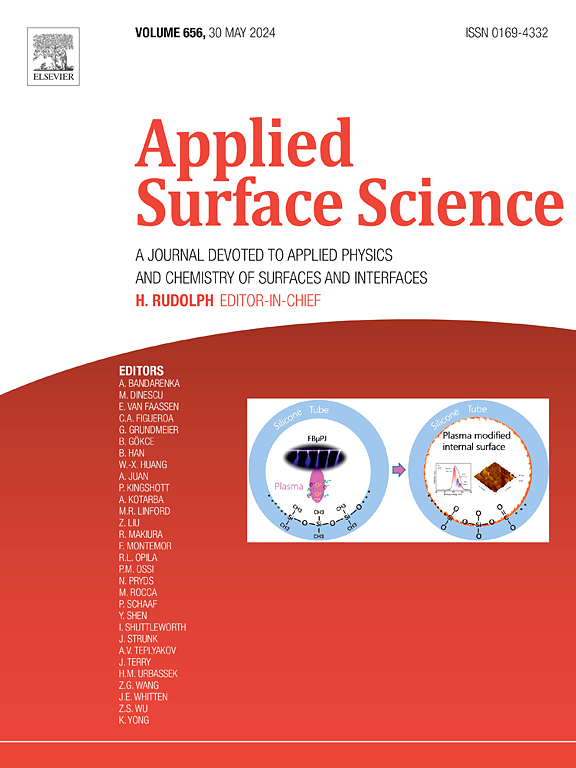预变形对铝锂合金中Cl离子的吸附行为及耐腐蚀机理研究
IF 6.3
2区 材料科学
Q2 CHEMISTRY, PHYSICAL
引用次数: 0
摘要
研究了Al-Li合金在预拉伸行为下的耐蚀性变化,讨论了Al-Li合金变形行为下析出相的电子传递和应力应变。第一性原理计算表明,在Al3Zr中Cl更容易吸附在Al原子上,吸附能为−7.28961 eV。在Al (111)/Al3Li(111)界面处,Cl吸附在Al基体上的结构最稳定,吸附能为−2.54351 eV。在1 %-5%应变下,界面处的电子云分布没有明显变化。XRD表征表明,在2 %应变下,Al3Li和Al3Zr相的析出增强,晶粒细化程度提高。拉伸和电化学实验表明,2 %应变下试样的腐蚀速率最低(1.0374 mm/a), 2 %应变下低频区角值变化幅度从10.623°到19.57°,变化程度最大,耐蚀性能最好。腐蚀形貌的SEM观察表明,腐蚀演变为晶间腐蚀,在腐蚀过程中,晶间腐蚀发展为点蚀,大量Cl离子附着在腐蚀坑上,导致材料表面剥落。本研究表征了Al-Li合金在不同应变下的耐蚀性差异,研究结果为开发高耐蚀性、轻量化、低成本的新型铝合金材料提供了技术指导。本文章由计算机程序翻译,如有差异,请以英文原文为准。


Research on the adsorption behavior and corrosion resistance mechanism of Cl ions in aluminum-lithium alloys by pre-deformation
This paper investigates the changes in corrosion resistance of Al-Li alloys under pre-tensile behavior, and discusses the electron transfer and stress–strain of precipitated phases under deformation behavior in Al-Li alloys. First-principles calculations reveal that Cl is more easily adsorbed on Al atoms in Al3Zr with an adsorption energy of −7.28961 eV. The structure of Cl adsorbed on the Al matrix at the Al (111)/Al3Li (111) interface is the most stable, with an adsorption energy of −2.54351 eV. Under 1 %-5% strain, the electron cloud distribution at the interface does not change significantly. XRD characterization shows that the precipitation of Al3Li and Al3Zr phases is enhanced and the degree of grain refinement is increased under 2 % strain. Tensile and electrochemical experiments indicate that the corrosion rate of the sample under 2 % strain is the lowest (1.0374 mm/a), and the angle value in the low-frequency region changes from 10.623° to 19.57° under 2 % strain, with the largest variation degree, exhibiting the best corrosion resistance. SEM observation of the corrosion morphology shows that the corrosion evolves into intergranular corrosion, and during the corrosion process, intergranular corrosion develops into pitting corrosion, with a large amount of Cl ions adhering to the corrosion pits, leading to spalling of the material surface. This study characterizes the differences in corrosion resistance of Al-Li alloys under different strains, and the research results provide technical guidance for the development of new aluminum alloy materials with high corrosion resistance, light weight, and low cost.
求助全文
通过发布文献求助,成功后即可免费获取论文全文。
去求助
来源期刊

Applied Surface Science
工程技术-材料科学:膜
CiteScore
12.50
自引率
7.50%
发文量
3393
审稿时长
67 days
期刊介绍:
Applied Surface Science covers topics contributing to a better understanding of surfaces, interfaces, nanostructures and their applications. The journal is concerned with scientific research on the atomic and molecular level of material properties determined with specific surface analytical techniques and/or computational methods, as well as the processing of such structures.
 求助内容:
求助内容: 应助结果提醒方式:
应助结果提醒方式:


